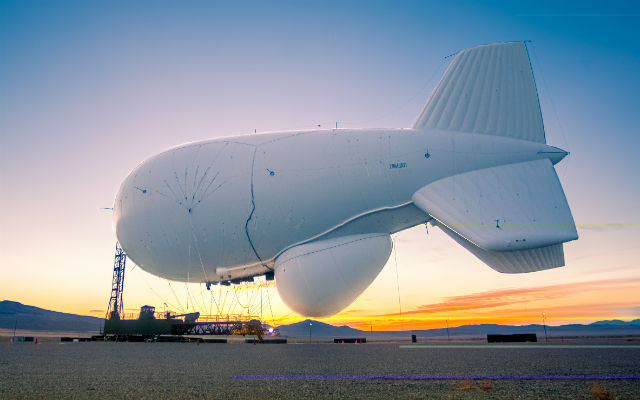Raytheon has completed software integration testing of the US Army’s new aerostat-based radar system with the necessary command and control (C2) systems that will be required during its first deployment above Washington, DC, towards the end of the year.
Raytheon’s joint land attack cruise missile defence elevated netted sensor (JLENS) system will be integrated within North American Aerospace Defense Command (NORAD), and has undergone simulated laboratory based testing to enable the correct data collected by JLENS to be transferred to NORAD.
JLENS will be deployed out of Aberdeen Proving Grounds, Maryland, by the end of 2014, and will be used to survey the East Coast of the USA.
Raytheon developed software that will enable the data that JLENS collects from its radars to be transferred to data that NORAD will understand and require.

Raytheon
The testing involved simulating an array of potential objects that the radar may pick up and communicating the appropriate information to NORAD, as well as making sure that co-ordinates of relevant targets were correct.
JLENS will survey the northeast air corridor - which has dense air traffic - so the software testing was demonstrated using the most complex environment the system is likely to encounter.
“We took simulated data and put it through this JLENS software,” Doug Burgess, Raytheon’s JLENS programme manager, says. “From a technical standpoint, it was about taking JLENS data and transferring it to data that NORAD can understand.”
Burgess notes that the software task was not new to the company, following its experience in integrating JLENS data into other forces’ C2 systems.
The two-aerostat system consists of a fire control and surveillance radar sitting at 10,000ft and detecting incoming missiles and unmanned air vehicles from some 295nm (547km) away.
Two systems have been developed, one of which will deploy to survey the East Coast, while the other has entered the army’s strategic reserve.
JLENS will be operated by NORAD, as well as US Northern Command (NORTHCOM). Under the instruction of NORTHCOM, the army’s A Battery, 3rd Air Defence Artillery, will operate the system when it is deployed later this year. One JLENS orbit takes six people to inhaul/exhaul the system, and a team of three to four to operate.
Construction is under way at Aberdeen, which when completed will lead onto integration of the system into NORAD and NORTHCOM and subsequent deployment, which Burgess claimed was on track to begin by the end of 2014.
Source: FlightGlobal.com



















